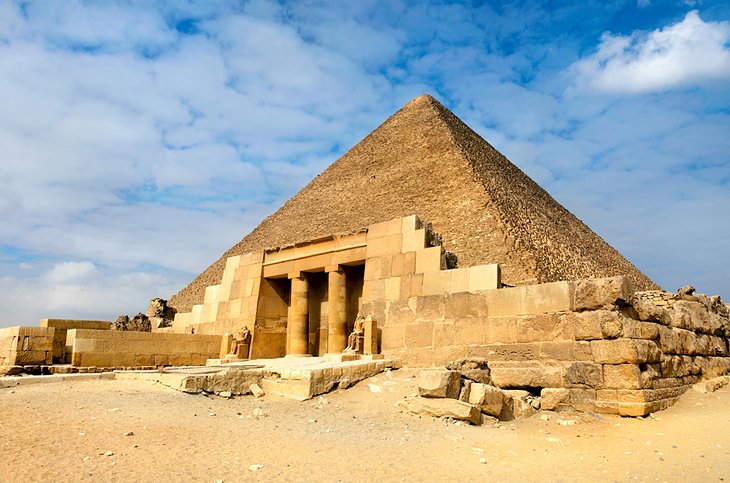Egyptian Tomb ArchitecturePosted by Lola Nickson on December 9th, 2020 The ancient Egyptians believed that a person continues to live after the death. They also placed faith in the idea that in order for this afterlife to be safe, it should strictly comply with certain conditions. The ancient Egyptians thought that the human soul (Ka) after its death continues to live only in case if the body (Ba) will remain intact. Therefore, it was extremely important to be sure that the mummy of the deceased person was carefully kept. No wonder that Egyptian tomb architecture was complex. Moreover, it should be noted that exploration of the sculptures, paintings and scripts provides an insight into Egyptian beliefs and culture for researchers and scientists. It was necessary to build home for "Ba”, a special tomb, which was inviolable: anyone who tried to ruin it was doomed for the curse of the dead man and the judgment of the gods. In honor of the departed, who always had a need for an afterlife, the walls of the tomb were covered with numerous reliefs and paintings. Their mission was to replace for the "Ka" all the things that surrounded the man when he was alive. The tombs of the pharaohs differ in their architecture. Their sepulchres are simple, consisting of a shaft and the burial chamber of the pharaoh. Most of the tombs for pharaohs represent a complex network of underground tunnels with a variety of facilities and burial chambers. The notables wanted to be nearby their ruler after his death; they sought to build their burial chambers near the tomb of the pharaoh. Thus, cemeteries (cemetery burials with many nobles and dignitaries) were built. All the Egyptian tombs had two essential components – a burial chamber that protected the body and spirit, and a nearby mortuary chapel that was accessible for visitors. The interior of the charnel vault could be different because of the time of construction and religious beliefs prevailing in the place of its creation. At first, it was a simple room, then, the walls and ceilings of the burial chambers were covered with plaster that was painted with murals of excellent quality, as well as with curved bas-reliefs depicting scenes from the earthly life of the deceased. Later, special religious texts began to appear on the walls of the Pharaoh’s tomb. These were so-called Pyramid Texts, which served as a guide to the deceased ruler’s afterlife. The article was conduct by professional writer Lola Nickson, more her topics at papers-land case brief writing service
Like it? Share it! |




